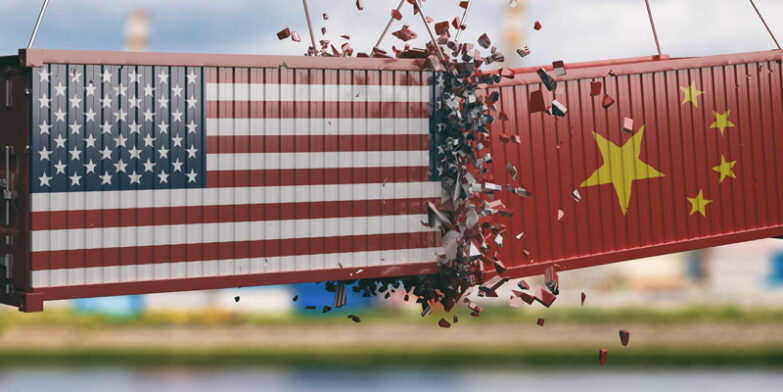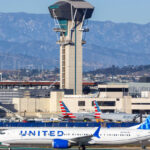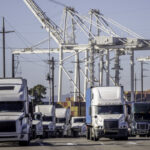
New US and China port fees are impacting every shipper moving goods between Asia and North America, with far-reaching regulations and escalating cost pressures.
UPDATE 30 OCTOBER – Donald Trump and Xi Jinping have agreed to end tit-for-tat levies on each other’s shipping industries, but there is no certainty yet as to when this will take effect.
From 14 October, the United States began enforcing “special port service fees” on Chinese-linked shipping, with immediate financial and operational impact. Chinese-owned or operated vessels are now subject to charges starting at $50 per net ton, ratcheting higher every year until 2028.
Early estimates suggest the cost to Chinese carriers is already substantial: Cosco Shipping and its OOCL subsidiary reportedly paid over $42 million in the first week alone, with their combined annual exposure projected to reach as much as $2 billion if no changes are made to the current fee structure. HSBC analysis indicates the levy translates to around $600 per container for Chinese carriers.
Chinese-built ships (regardless of operator) are liable for $18 per net ton or $120 per container, while foreign-built vehicle carriers also face new tariffs. Pre-payment and strict compliance are essential: missing these requirements could see cargo refused at US ports, resulting in cascading delays and unexpected costs for importers and exporters alike.
Carrier alliances have responded by withdrawing significant vessel capacity through blank sailings, and implementing aggressive General Rate Increases (GRIs) of up to $2,300 per TEU. In just one week, spot rates surged: the Shanghai–US West Coast route jumped 32% to $1,936/FEU, and the Shanghai–US East Coast climbed 16% to $2,853/FEU.
Analysts expect further upward momentum as shippers seeking in-transit exemptions rush to secure bookings before a proposed 100% US import tariff is introduced in November, potentially lifting rates to $3,000 per FEU—even though market volumes may not fully support these price levels.
Chinese Retaliatory Fees
China has retaliated with port fees targeting US-owned or operated vessels, including those controlled by companies with at least 25% US ownership. Yet the overall industry impact has so far been contained.
Leading shipping groups like Maersk and Hapag-Lloyd swiftly adjusted their transpacific operations, diverting US-flagged ships away from affected ports. Matson, the primary US carrier, has been directly impacted, while CMA CGM’s subsidiary APL avoided new charges thanks to its China-based fleet. Market observers note that the final scope of China’s fee policy remains uncertain, though immediate disruption has proved milder than many anticipated.
Outlook
The interplay of regulatory actions and looming tariffs is generating unpredictable costs and forcing operational changes across the container market. Blank sailings are thinning available space, GRIs are multiplying, and freight buyers face persistent risk as the policy environment remains fluid.
Global Forwarding’s experts are tracking developments daily, collaborating with leading carriers to secure competitive rates, adapt routing, and protect our customers from regulatory pitfalls.
If your supply chain depends on reliable cross-Pacific services, now is the time to assess your options.
EMAIL Adam Davies, Vice President, to overcome these challenges, ensuring cost control and resilience for the months ahead.





